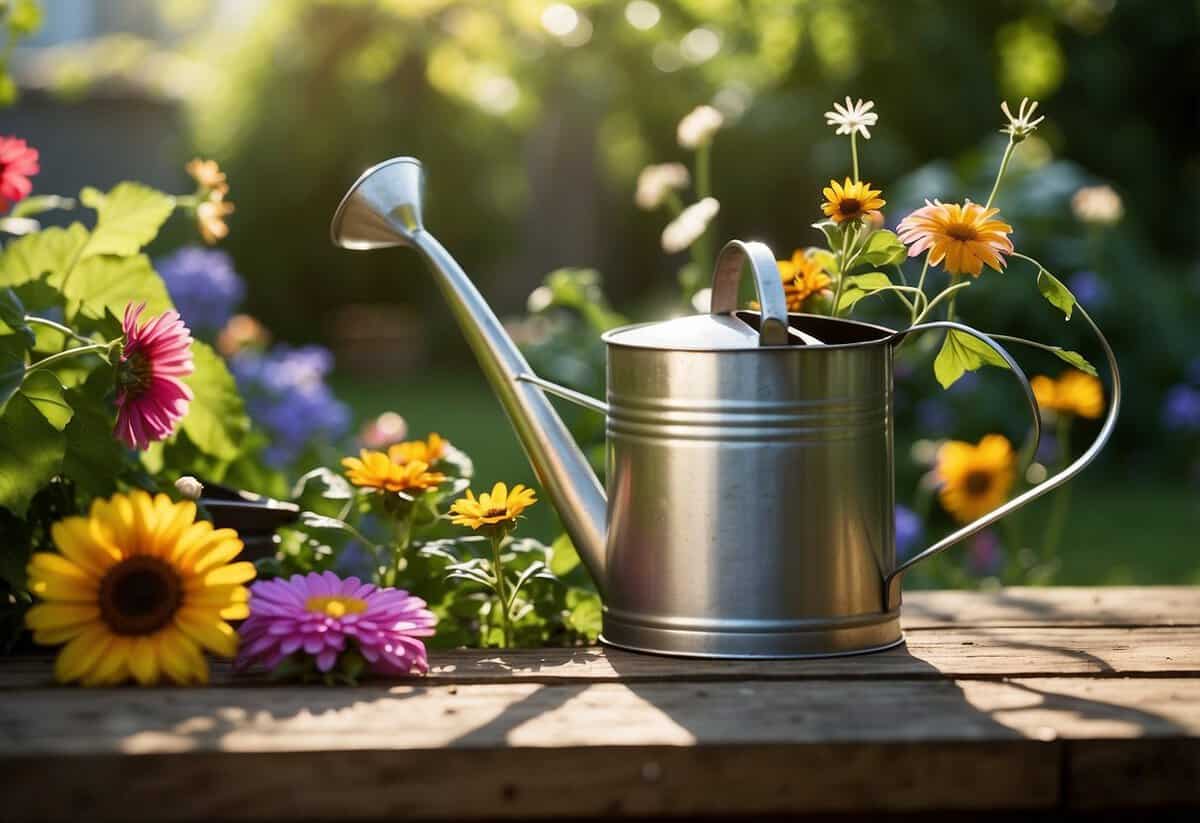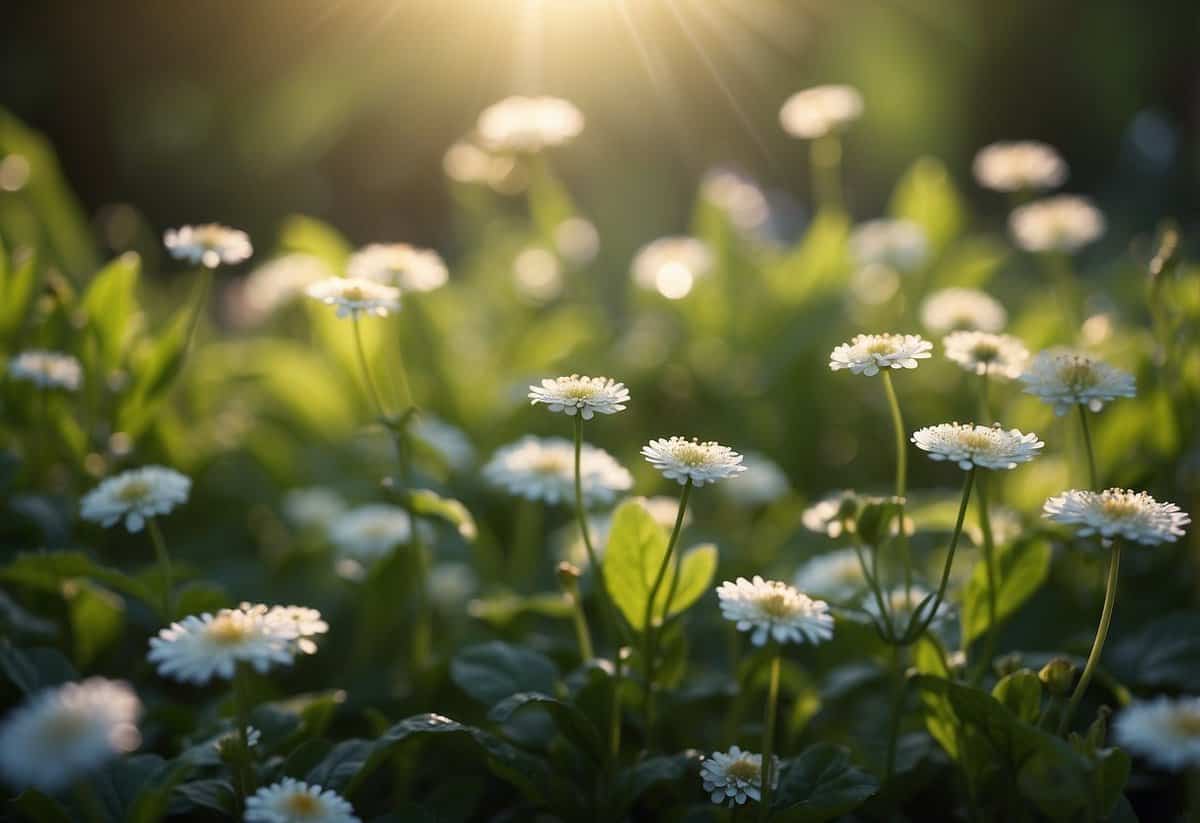Summer Garden Tips: Easy Ways to Boost Blooms
Summer is a wonderful time to enjoy your garden’s vibrant colors and fragrant blooms. As the days get warmer and longer, your garden can provide a relaxing retreat where you can unwind and connect with nature. Whether you are a seasoned gardener or just starting out, keeping your garden in top shape during the summer months is essential.

How can you make sure your garden thrives all summer long? With a combination of proper care, timely tasks, and a watchful eye, you can ensure that your plants remain healthy and beautiful. From watering techniques to pest control, there are several key practices that can make a significant difference in your garden’s health.
1) Water Deeply in the Morning

Watering your plants in the early morning is ideal. The temperature is cooler, so the water won’t evaporate as quickly. This gives your plants plenty of time to absorb the moisture they need.
Deep watering encourages the roots to grow deeper into the soil. This makes the plants stronger and better able to withstand heat.
Morning watering also helps avoid fungal diseases. Water on the leaves has time to dry before the evening, reducing the risk of mold and mildew.
2) Mulch to Retain Moisture

Mulching is a great way to keep your garden soil moist during the summer. Adding a layer of mulch can help prevent water from evaporating too quickly.
Aim for a mulch layer of about 2 to 4 inches deep. This depth is enough to keep moisture in without blocking rainwater from reaching the soil.
Mulch also helps suppress weeds by blocking sunlight. This means your plants will have less competition for water. Using mulch can also reduce the amount of watering you need to do, saving time and resources.
3) Plant Drought-Tolerant Species

Including drought-tolerant plants in your garden helps conserve water and ensures your garden stays vibrant during dry spells.
Consider planting lavender for its beautiful purple flowers and calming scent.
Black-eyed Susans are another great option with their bright, daisy-like blooms.
These plants need less water, making your summer gardening easier and more efficient.
4) Use Shade Cloth for Sensitive Plants

Using shade cloth can protect your sensitive plants from harsh sunlight. It acts like a sunscreen for your garden.
For vegetables, try a 40% to 60% shade cloth. Tomatoes might need 50% coverage. For succulents and light-sensitive plants, consider 60% to 70% shade cloth.
This will help reduce the need for frequent watering and prevent sunburn. For more tips, check out Epic Gardening.
5) Install a Drip Irrigation System

A drip irrigation system is a great way to keep your garden watered. It delivers water directly to the plants’ roots, reducing water waste.
Start by planning where to place the main tubing. This will run along your garden beds.
Connect the main tubing to your water source using a garden hose. Attach smaller tubing to direct water to each plant.
Make sure to add emitters to control the water flow. Check for leaks and cover the tubing with mulch to protect it. For more tips, visit this guide.
6) Add Compost to Enrich Soil

Adding compost to your garden soil is one of the best ways to boost its nutrients. Compost enriches the soil, making it fertile and healthy for your plants. Compost is made by decomposing plant material and other organic matter.
You can spread 1 to 3 inches of compost across your garden. This works well in both spring and fall.
Mix the compost into the top layer of the soil. Use a garden fork to work it in about 10 inches deep. This will help improve soil structure and moisture retention.
Using compost as mulch can also inhibit weeds and reduce soil erosion.
7) Prune regularly for growth

Pruning in the summer helps plants stay healthy and encourages new growth. Trim off dead or diseased branches to prevent pests and diseases from spreading.
Focus on removing overgrown parts that block light and air circulation. This helps flowers, bushes, and trees thrive.
For specific tips on what to prune, you can refer to advice from experts on summer pruning.
8) Plant companion flowers

Planting companion flowers in your garden can help improve plant health and growth. Flowers like marigolds are known for attracting bees and other pollinators. This can increase the pollination of your vegetables.
Sunflowers are great companions too. They can provide shade for sun-sensitive plants and attract beneficial insects. Dill, another excellent companion, attracts ladybugs and lacewings which help control pests on your veggies.
Consider adding a mix of flowers to ensure constant blooms and a healthy garden. For more ideas, check out using flowers for companion plants.
9) Use natural pest repellents

Keeping your garden pest-free doesn’t mean using harsh chemicals. You can control pests naturally.
One easy method is to use food-grade diatomaceous earth. Sprinkle it around plants to deter crawling insects.
Another option is to mix 1 cup of vegetable oil, 1 tablespoon of mild soap, and 1 quart of water. Spray it on your plants to repel pests effectively.
Finally, consider planting lavender around your garden. Its scent keeps many pests away.
10) Harvest crops frequently

Checking your garden often is key to keeping it healthy.
Pick your vegetables when they are young and tender. This keeps the plants producing more.
Daily visits help you catch vegetables at their peak. Freshly-picked veggies taste best.
Picking vegetables like tomatoes and peppers regularly encourages more growth.
Keep an eye on the size and shine of your crops to determine the perfect harvest time.
Preparing Your Soil

To grow healthy plants, it’s important to prepare your garden soil properly. This includes testing the soil pH and adding compost and fertilizers.
Testing Soil pH
Start by testing your garden’s soil pH. This helps you understand if your soil is too acidic or too alkaline for the plants you want to grow. Many garden centers sell pH test kits, which are easy to use.
Insert the probe into damp soil and wait for the reading. Most vegetables prefer a pH between 6 and 7. If your pH is outside this range, you’ll need to adjust it. For acidic soil, add some lime. For alkaline soil, use sulfur or peat moss.
Keeping your soil pH within the right range ensures that plants can absorb the nutrients they need.
Adding Compost and Fertilizers
Adding compost improves soil texture and provides essential nutrients. Use well-decomposed compost, which looks dark and crumbly. Spread a 2-3 inch layer over your garden and mix it into the top 6 inches of soil.
Fertilizers help with specific nutrient needs. A balanced fertilizer has equal parts nitrogen, phosphorus, and potassium, often labeled as 10-10-10.
For organic options, consider using aged manure or a bone meal. Manure adds nutrients and improves soil moisture retention. Bone meal is rich in phosphorus, which promotes root development and flowering.
Mix any fertilizer thoroughly into the soil to avoid burning plant roots. Regularly adding compost and the right fertilizers will keep your soil healthy and productive throughout the growing season.
Choosing the Right Plants for Summer

Selecting the best plants for summer means considering heat tolerance and pest resistance. Use companion planting to enhance growth and protect your garden from pests.
Heat-Resistant Plant Varieties
During summer, temperatures can soar, making it vital to choose plants that thrive in the heat. One of the best options for your summer garden is the tomato. Tomatoes love warm weather and can produce an abundant harvest with proper care. Other great choices include peppers, eggplants, and squash, all of which can handle the summer heat well.
Herbs like basil, rosemary, and thyme are also excellent for hot weather. They not only survive but often flourish in the sun. Make sure to water these plants deeply and consistently, particularly during dry spells. For flowers, consider marigolds and zinnias, which are both heat-tolerant and colorful.
Companion Planting for Pest Control
Companion planting involves placing certain plants together to repel pests naturally. Marigolds are a perfect example as they can repel nematodes and other harmful insects. Planting marigolds near vegetables like tomatoes and peppers can keep these pests at bay.
Basil is another fantastic companion plant. When you plant it near tomatoes, it can deter whiteflies, aphids, and spider mites. Nasturtiums can be planted alongside cucumber and squash to repel squash bugs and aphids. Additionally, rosemary and sage near carrots can protect them from carrot flies.
Using companion planting not only helps with pest control but can also improve the growth and flavor of your crops. Remember to research and place the plants strategically to maximize the benefits.
Watering Techniques

To keep your garden thriving in the heat, you’ll need effective watering techniques. These focus on using the right tools and timing your watering correctly.
Using Drip Irrigation Systems
Drip irrigation systems are a fantastic way to water your garden efficiently. These systems deliver water directly to the base of plants, reducing evaporation and runoff. This ensures that water goes where it’s needed most – the roots. Setting up a drip irrigation system involves laying tubing around your garden and attaching emitters near the base of each plant.
One great advantage of these systems is their ability to deliver consistent moisture without water waste. You can also add a timer to automate watering, making it less of a daily task. This way, you get peace of mind knowing your plants are being cared for even when you’re away.
Drip systems are especially useful for larger gardens or those with plants that have different watering needs. Adjusting the emitters allows you to control the flow to each plant, ensuring each one gets the right amount of water. Consider this a smart investment for a healthy and sustainable garden.
For more detailed setup instructions, see this guide on drip irrigation.
Best Times to Water
Timing is crucial when it comes to watering your garden. The best time to water is early in the morning. Watering in the morning allows the soil to absorb moisture before the sun gets too hot, reducing evaporation. The morning dew helps keep the soil cool and moist, which is ideal for most plants.
Avoid watering during the hottest part of the day. Watering at midday means much of the water will evaporate before it reaches the roots. Evening watering is an option, but it can increase the risk of fungus and mildew as the water sits on the plants overnight.
Watering deeply and infrequently is more effective than watering lightly every day. Deep watering encourages roots to grow deeper, making plants more drought-resistant. To learn more about the best watering times, check out these expert tips.







